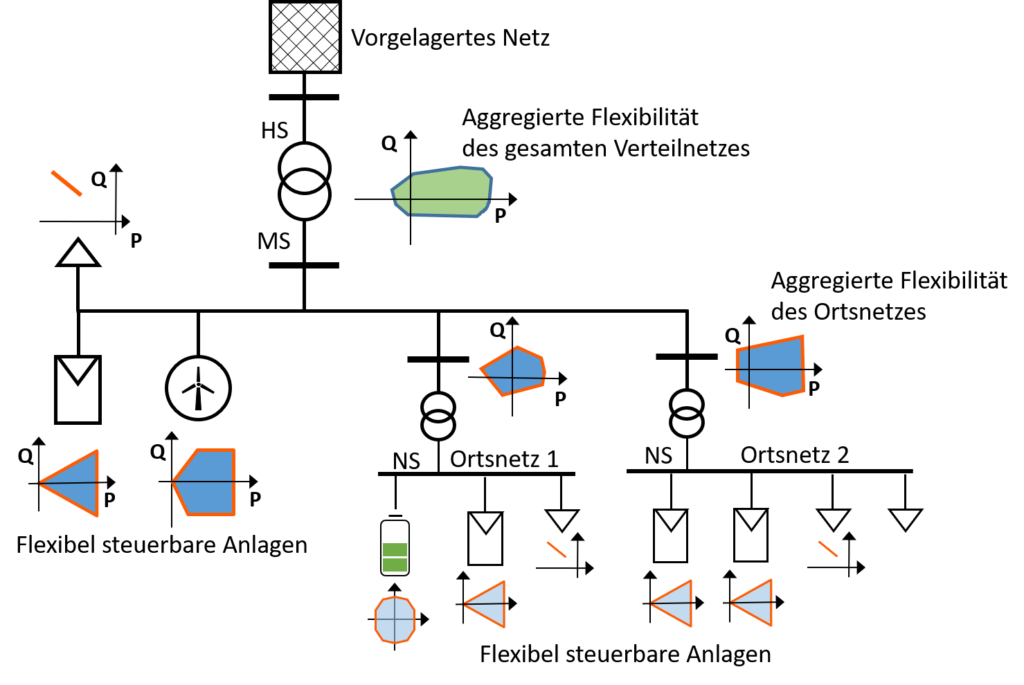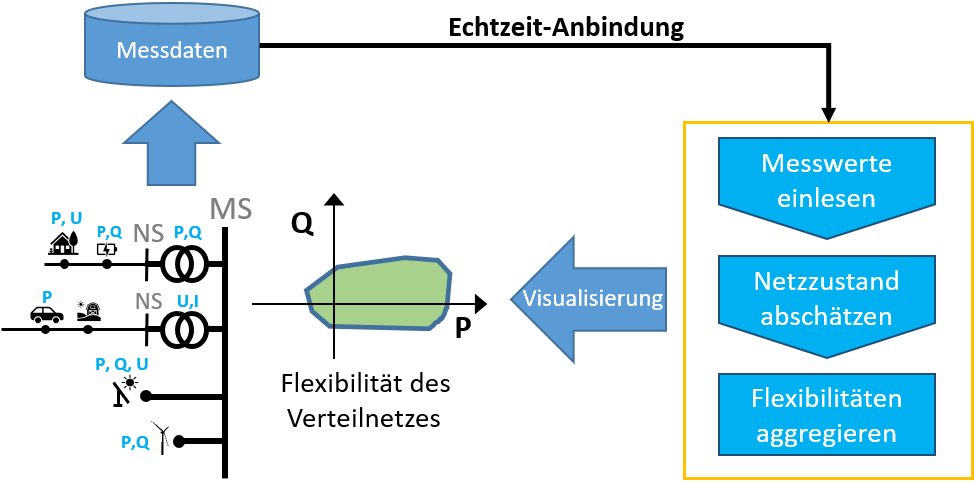In the flexQgrid project, the distribution grid is being tested as an active and intelligent actor in the energy transition. A key role is played by the Units within the grid, which can be flexibly controlled and whose active and reactive power behavior can be adapted to the needs of the overall system within a predefined framework using an external signal. These can be loads (e.g. households, farms, etc.) as well as generation plants (photovoltaic, biomass plants, ...) or storage facilities.
However, since individual, decentralized units, due to their comparatively small installed capacity, usually have only a small influence on the upstream grid, the entirety of all units is considered in flexQgrid. For this purpose, all flexibilities within the grid are combined, resulting in a flexibly controllable distribution grid from individual units, which can be used to support the upstream grid.

Estimation of the grid condition
In this project, various real measurement data from the grid are read in and transmitted in real time. However, since not every point within the grid is precisely measured, the existing measurement data is first used to estimate the state of the entire grid. Thus, the current voltages and powers at each node as well as the utilization of all lines and transformers are determined. This grid condition forms the basis for determining both the currently available flexibility potential of each plant and any network restrictions that may exist. These variables are then used as input data in an optimization algorithm that aggregates all flexibilities within the grid. As a result, a range is obtained in which, depending on the load case, the power consumption or the regeneration can be varied without violating grid restrictions. The entire process is carried out every minute and thus provides a live picture of the flexibility that can be provided by the distribution grid. The result can then be visualized in the grid opation so that the operating point of the grid can be adjusted if necessary and the flexibility of the individual units can be activated..

Use of aggregated flexibility to support the grid
A flexibly controllable distribution grid offers versatile possibilities to contribute to the system stability of the power supply system. Variation of active and/or reactive power within the permissible range are helpful to counteract both voltage and frequency problems. Aggregation of different distribution grids makes it possible to influence the utilization of lines in the transmission system and reduce high redispatch costs thanks to intelligent congestion management. In addition, since aggregation can be carried out across different voltage levels, communication between transmission system operators and distribution system operators is greatly simplified. Instead of having to keep track of and control a large number of small, decentralized units, the new operating point of the entire grid can be specified and automatically distributed to the individual units.
The aggregation of individual flexible units, starting with smart households in the low-voltage sector, can be an important building block for decentralized system service provision in the future and thus contribute to the success of the energy transition.

